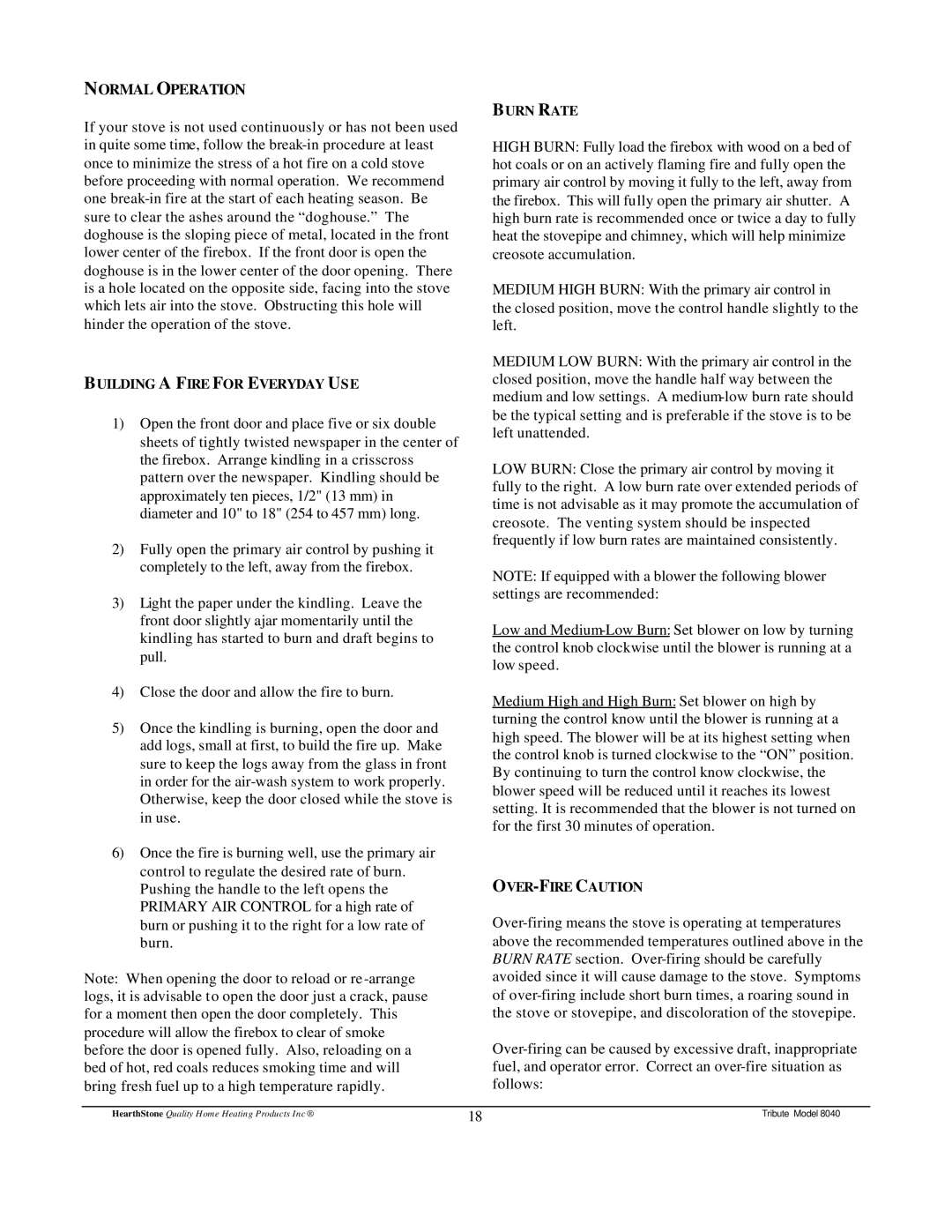NORMAL OPERATION
If your stove is not used continuously or has not been used in quite some time, follow the
BUILDING A FIRE FOR EVERYDAY USE
1)Open the front door and place five or six double sheets of tightly twisted newspaper in the center of the firebox. Arrange kindling in a crisscross pattern over the newspaper. Kindling should be approximately ten pieces, 1/2" (13 mm) in diameter and 10" to 18" (254 to 457 mm) long.
2)Fully open the primary air control by pushing it completely to the left, away from the firebox.
3)Light the paper under the kindling. Leave the front door slightly ajar momentarily until the kindling has started to burn and draft begins to pull.
4)Close the door and allow the fire to burn.
5)Once the kindling is burning, open the door and add logs, small at first, to build the fire up. Make sure to keep the logs away from the glass in front in order for the
Otherwise, keep the door closed while the stove is in use.
6)Once the fire is burning well, use the primary air control to regulate the desired rate of burn. Pushing the handle to the left opens the PRIMARY AIR CONTROL for a high rate of burn or pushing it to the right for a low rate of burn.
Note: When opening the door to reload or re
BURN RATE
HIGH BURN: Fully load the firebox with wood on a bed of hot coals or on an actively flaming fire and fully open the primary air control by moving it fully to the left, away from the firebox. This will fully open the primary air shutter. A high burn rate is recommended once or twice a day to fully heat the stovepipe and chimney, which will help minimize creosote accumulation.
MEDIUM HIGH BURN: With the primary air control in
the closed position, move the control handle slightly to the left.
MEDIUM LOW BURN: With the primary air control in the closed position, move the handle half way between the medium and low settings. A
LOW BURN: Close the primary air control by moving it fully to the right. A low burn rate over extended periods of time is not advisable as it may promote the accumulation of creosote. The venting system should be inspected frequently if low burn rates are maintained consistently.
NOTE: If equipped with a blower the following blower settings are recommended:
Low and
Medium High and High Burn: Set blower on high by turning the control know until the blower is running at a high speed. The blower will be at its highest setting when the control knob is turned clockwise to the “ON” position. By continuing to turn the control know clockwise, the blower speed will be reduced until it reaches its lowest setting. It is recommended that the blower is not turned on for the first 30 minutes of operation.
HearthStone Quality Home Heating Products Inc ® | 18 | Tribute Model 8040 |
|
|
